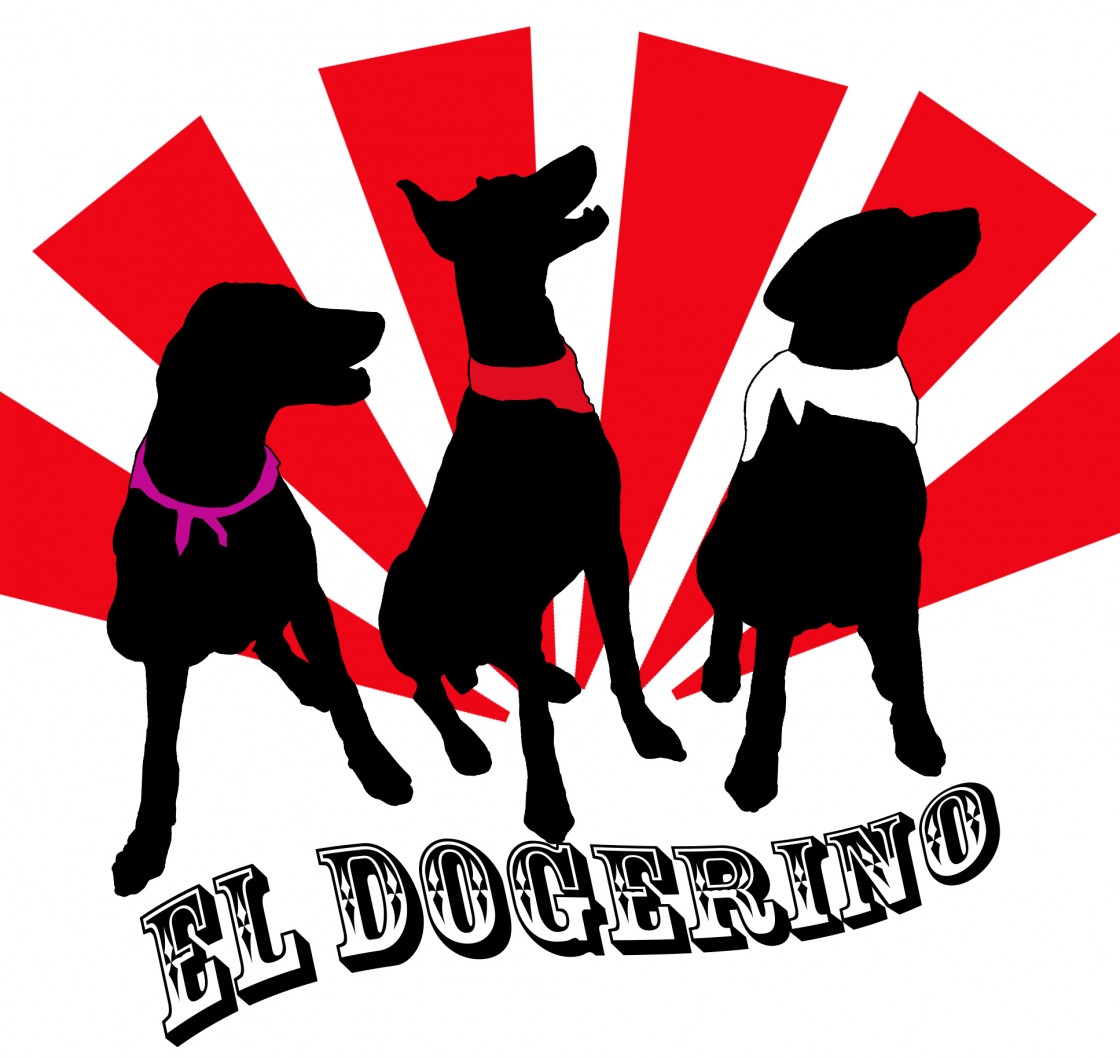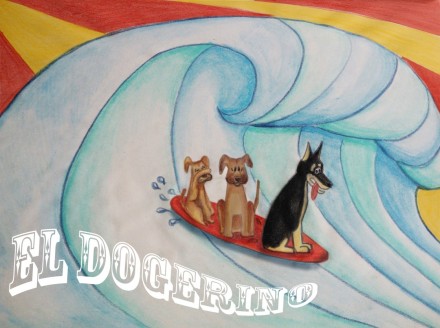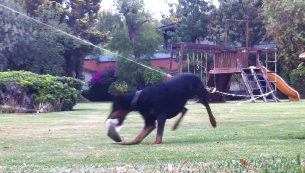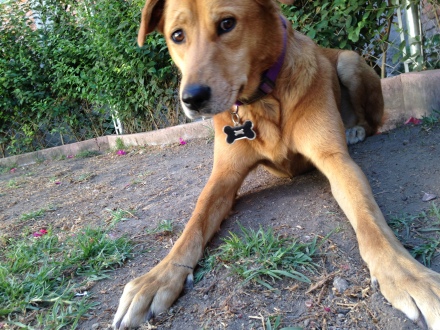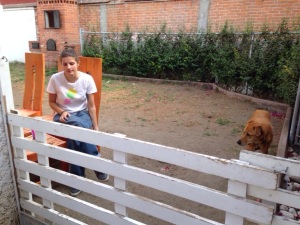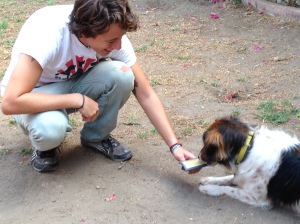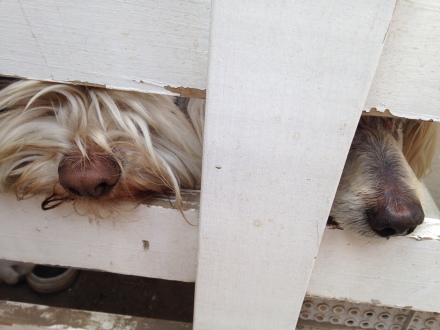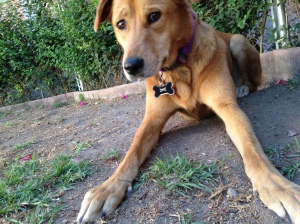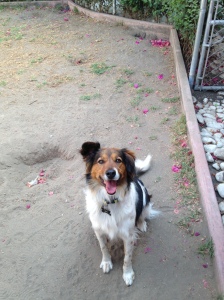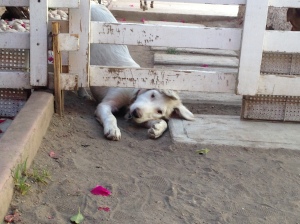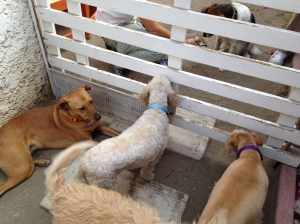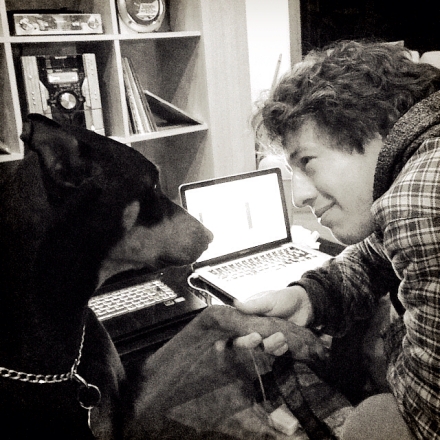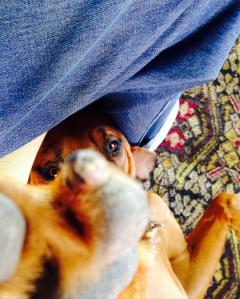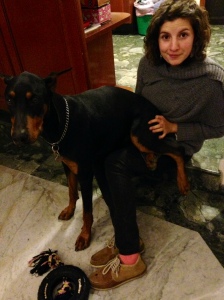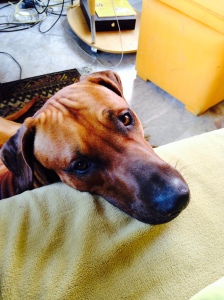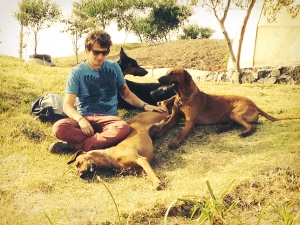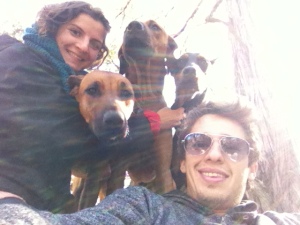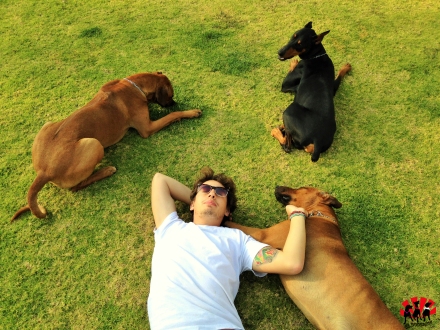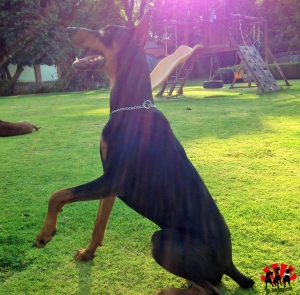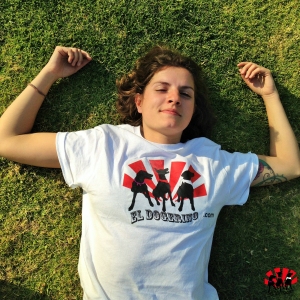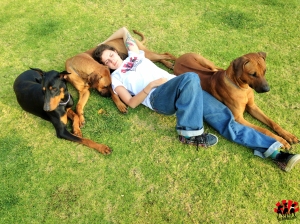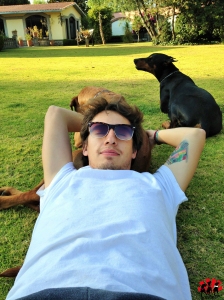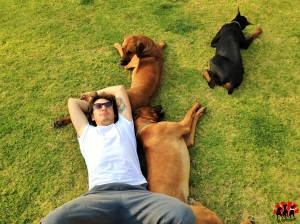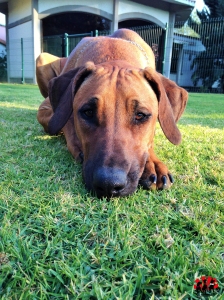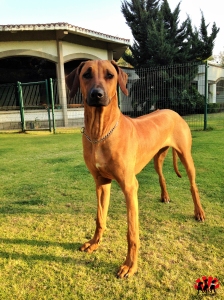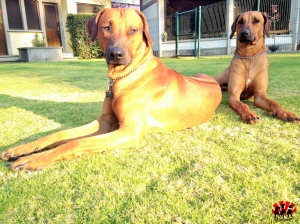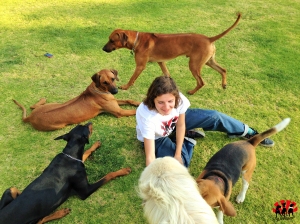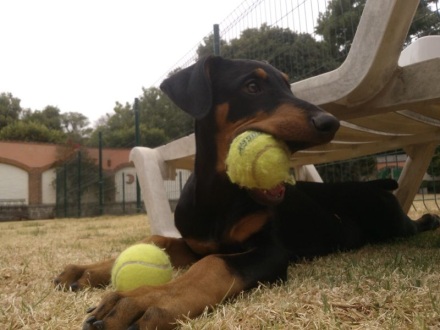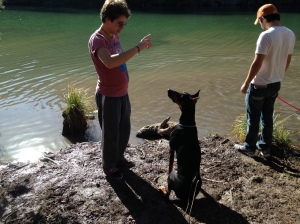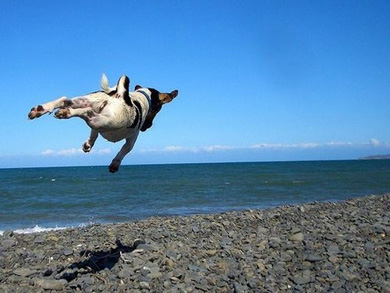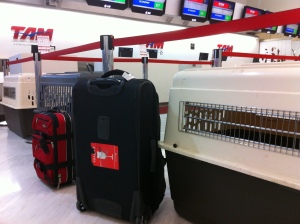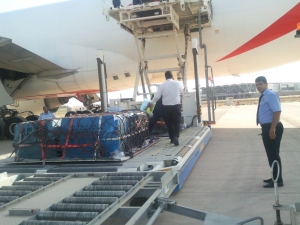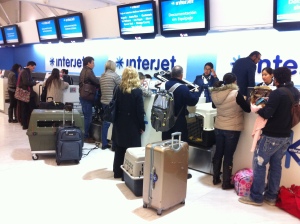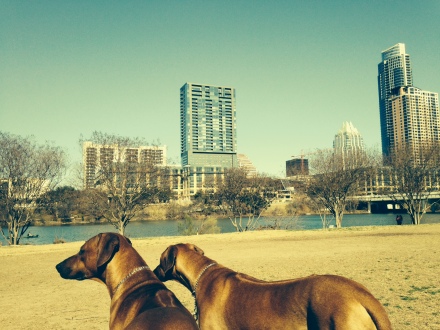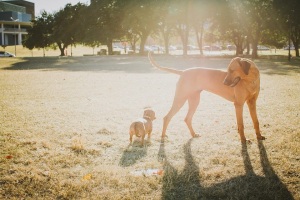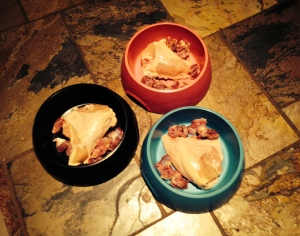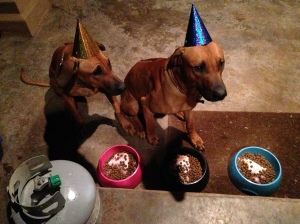The more we read about and explored the world of dog training and rehabilitation, the clearer it became that there is a holy war raging between two worlds of opposing ideology; that of dominance and that of positive reinforcement.
At first we thought we were missing something in between the lines, maybe misreading the different articles’ statements or that we were just pure dumb and could not grasp the intricacies of either method/theory/culture.
So we did the only thing we could and bought a bunch of books, read a bunch of articles, talked to several professionals, and enrolled in certified training courses.
Our curiosity started about a year ago and we like to believe that we have come a long way since then (even though we are not even close to having acquired the amount of knowledge we would like) and slowly we have been making up our mind as to which theory we prefer, but most importantly what we think the source of the problem is: Misunderstanding!
For training purposes we like both methods. We’ve seen both of them work with almost equally successful results. Both can rehabilitate difficult dogs and train almost every dog in as many fields as there can possibly be. We would even take it as fas as saying that in many, many ways, these two opposing methods are very much alike. For example, in desensitising and counter-conditioning a dog both methods will use some kind of “treat” or positive reinforcement, be it a cookie, a praise or encouragement, a toy or a gentle stroke, the procedure and effect is the same.
So, if both methods work and they are actually not as different in some occasions, what’s the big deal? Two very big problems are the cause of all this controversy: One regarding the general view of the dog and it’s behaviour, the second a great misunderstanding of the word “Dominance” (even called the “D” word now a days by those in favour of positive reinforcement).
We are going to concentrate on the latter but just a short word on the first problem.
In short, it is a disagreement on wether dogs live in packs, and wether they behave in a similar fashion to their ancestors the wolves. The APDT which is one of the largest organisations for dog trainers, goes as far as saying: ” the idea that dog behavior can be explained through the application of wolf behavior models is no more relevant than suggesting that chimpanzee behavior can be used to explain human behavior.” – APDT (1)
This is of course ludicrous since dogs and wolves share the same genus (meaning closely related species of the same family) and humans and chimps don’t. Also, dogs evolved (through artificial selection) from wolves, around 100,000 years ago whereas humans and chimpanzees only share a common ancestor approximately 5.8 Million years ago before the family “Hominini” (Australopithecus) came to be and our paths diverged. Obviously there is a greater difference between humans and chimpanzees than between dogs and wolves.
Regarding this first problematic, the rest is just contradictory scientific research mixed with inconclusive results and the power of wishful thinking. People tend to focus on what they believe and disregard what they prefer not to acknowledge. Whether wolfs live in packs or families, or there is a pack leader or just parents exercising their right to rule over their pups makes no real difference regarding the real core of the controversy; dominance.
Supporters of positive reinforcement tend to confuse immensely the terms dominance and aggression. Aggression can arise between dogs but is never a solution nor a part of their intrinsic behaviour. Dogs (or other canids for the matter) of a same pack/group/family rarely resort to violence and aggression in conflict solving, unless the dog is suffering from any of the number of factors that can perturb its natural state and instincts (e.g. anxiety or fear). On the other hand, dominance exists whether we like it or not. Dominance means setting rules, boundaries and limitations. Being assertive in decision making, confident, and willing to assume the role of a good leader that can give guidance, fulfil the dog’s needs and relieve stress and anxiety in a productive manner. A leader is also responsible to give the dog’s life a purpose that is related to what the dog’s instinctual needs require, as can be for example working for food and water, simulating a hunt, developing the nostrils by doing search and rescue activities, amongst many other possibilities. That is why we like to call it “the leadership theory” and not the “dominance theory”.
Real leadership concentrates on a dog’s needs, not fear and control. The goal is to be viewed by your dog as a gentle, old, wise parent who can be strict and unyielding at times, yet never harsh nor mean but always compassionate and just.
Regarding dominance itself, it also exists as a physical form of communication between animals, but I have to reiterate that it is rarely shown through aggression! If you had the opportunity to observe many dogs living together you would have seen that there are peaceful disputes over various things like territory, food, toys, etc. These displays of dominance are transmitted through a very specific set of body movements from which the non verbal conversation is easily understood. One (the more dominant one) is saying “I mean you no harm but this is mine and you have to back away” the less dominant one usually thinks about it and decides to back off and forget the matter, or goes into a playful and submissive position to lure the other dog into play.
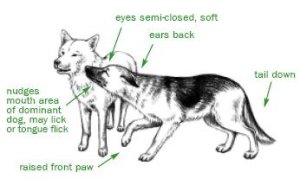
Most people who object with the “dominance theory” say that this works for intra-species relations, but it doesn’t work between humans and dogs, since we are not dogs and do not share the same language. Well, surprisingly we do share a very similar language, but because we are very verbal beings we tend to forget that we also developed the language of the body. Just because I’m from Mexico, doesn’t mean I cannot learn english and transmit information, even though it is not my language. Well the same applies to body language.
The last big misunderstanding between the two cultures is a lack of information regarding what dominance theorists believe. It is the understanding of people who support positive reinforcement that we believe a dog’s bad behaviour is the result of him/her trying to overpower us, or taking over the leader position. This couldn’t be further from the truth. If the role of the leader is already taken, dogs will not try to overpower the leader, but will be content to follow if the leader is the kind of which we spoke earlier. However, if that role is vacant, a dog might either naturally assume it or will become anxious due to that lack of leadership. Behaviour problems don’t come from a dog challenging your authority, but from a lack of boundaries and proper guidance.
See it as a class of high school students without a teacher. The lack of rules and limitations will encourage a revelrous and chaotic atmosphere. No one will try to assume the teacher’s role, it is just the lack of that role that leads to undesirable behaviour. Once that role has been filled by a proper tutor, that behaviour will stop.
Summarising this long, yet long overdue post:
- We believe that both theories have good things, amazing potential and similarities.
- The conflict is due to misunderstanding and a lack of information.
- Dominance for real dominance theorists (not brute, old school practices) does not involve aggression, pain or intimidation.
- Dominance is a combination of body language and leadership (fulfilling a dog’s needs).
- A misbehaved dog is NOT trying to take over the house or overpower your position within the family/pack. He/she is either asking for guidance and direction because he/she doesn’t know better or is suffering from anxiety due to a lack of proper guidance and leadership.
- Even though we disagree with some of the statements of the APDT, we absolutely agree that dog training should never involve fear, pain or intimidation, and should always be beneficial for both human and dog. We also encourage to include their practices and advise in whatever dog training method one chooses to employ.
We hope you find this enlightening, and that it can open your eyes to see that even though they are different, both practices are equally effective, compassionate, and well intentioned.
We would also like to thank “selfhelpdogtraining” @http://selfhelpdogtraining.com/wordpress/?p=124 for inspiring this post and http://www.gsdhelp.info/ for lending us a picture.
(1) http://www.apdt.com/petowners/choose/dominance.aspx
